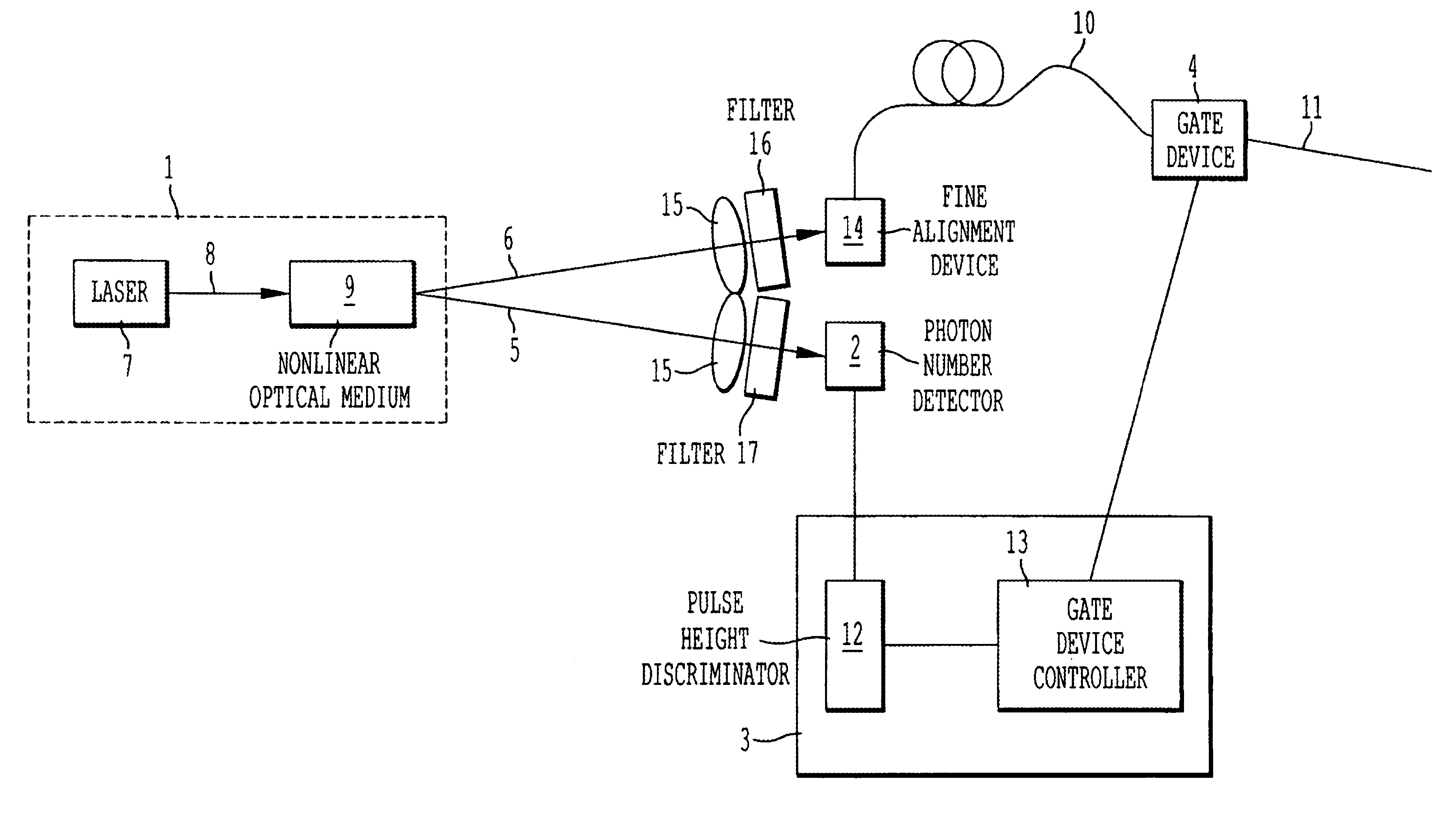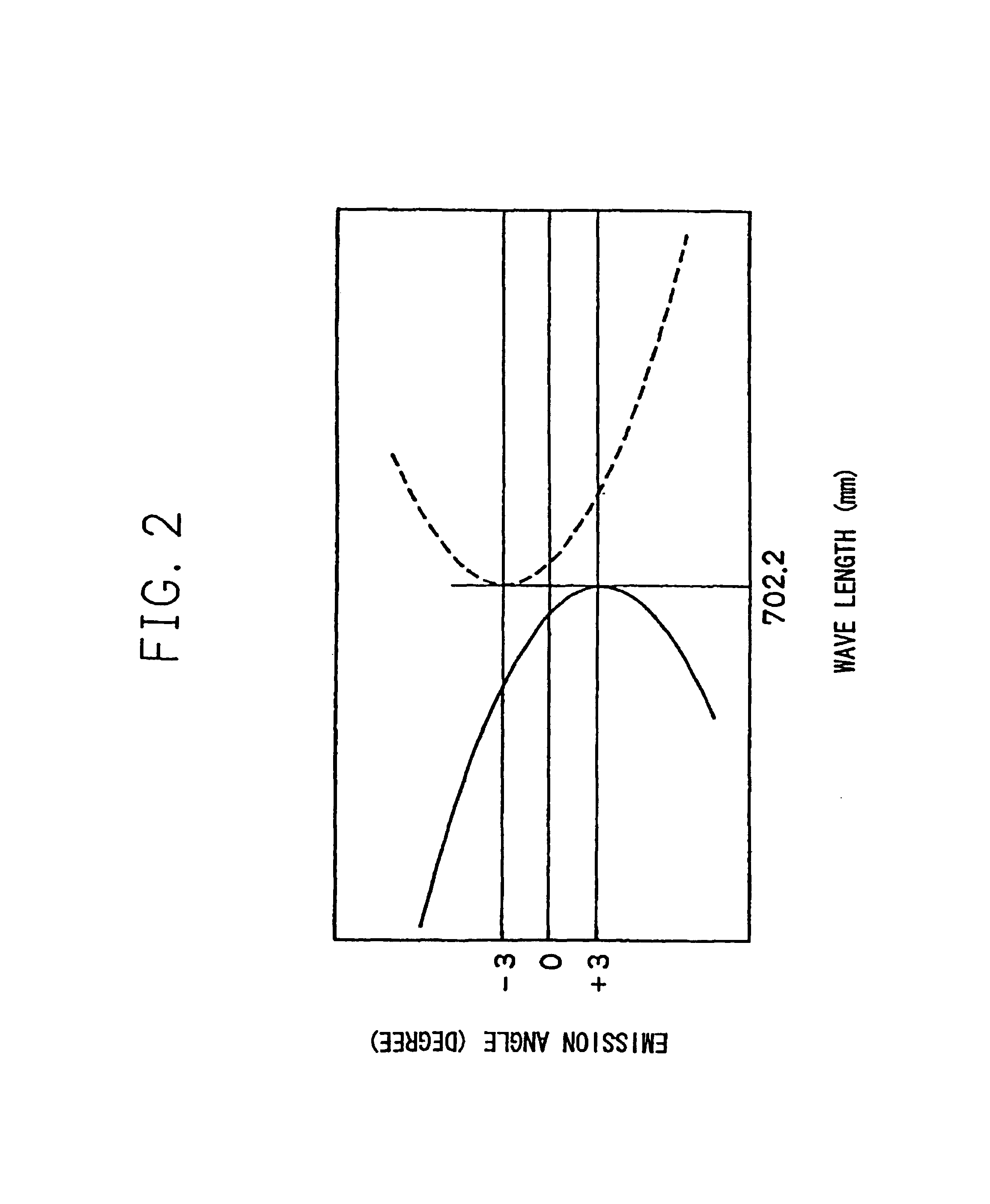Generator for producing photon number state
a generator and photon technology, applied in the direction of digital transmission, instruments, securing communication, etc., can solve the problems of detectors not being able to detect the presence of unauthorized listeners, unable to detect the incident of a plurality of photons, and unable to obtain the information on the number of incident photons
- Summary
- Abstract
- Description
- Claims
- Application Information
AI Technical Summary
Benefits of technology
Problems solved by technology
Method used
Image
Examples
embodiment 1
[0052]FIG. 1 is a general arrangement drawing of one embodiment of the invention. In this embodiment, it is a device in which a single photon state is generated and two photons do not densely exist within the resolution time τ of the detector.
(Description on Configuration)
[0053]In FIG. 1, numeral 1 denotes a photon pair source that generates a photon pair that correlate with the generation time, numeral 2 denotes a photon number detector for detecting an idler photon 5, and numeral 3 denotes a controller for controlling a gate device 4 in response to the information on the number of photons from the photon number detector. The gate device 4 controls the emission of a signal photon 6. The photon pair source 1 comprises a nonlinear optical medium 9 and a pumping light source 7 of a pumping light 8 that pumps the nonlinear optical medium. The idler photon 5 generated in the nonlinear optical medium 9 is converged to the photon number detector 2 via a filter 17 that allows the object id...
embodiment 2
[0064]In Embodiment 1, the wavelength of signal beam generated was 702.2 nm, but needless to say, this wavelength is able to optionally changed by selecting a suitable pumping light source laser and nonlinear optical medium. For example, it is naturally possible to generate wavelengths in the vicinity of 1550 nm, vicinity of 1310 nm, and in the vicinity of 800 nm, which are generally adopted to communication using optical fiber.
[0065]The method for generating a photon pair shown in Embodiment 1 (FIG. 2) is a method suited to obtain a photon pair beam with equal wavelengths and small angular dispersion, but it is possible to obtain a photon pair with different wavelengths by changing the optical axis direction of the BBO crystal for other object of use. In such event, the two tuning curves of FIG. 2 come in contact with straight lines that correspond to different wavelengths, respectively. In such event as well, the photons are taken out at an angle in which the tuning curves shown i...
embodiment 3
[0068]FIG. 5 shows another embodiment of the invention. In this embodiment, numeral 7 is a pumping light source, numeral 18 an optical fiber for guiding the pumping light, numeral 19 a waveguide channel type nonlinear medium, numeral 20 a waveguide channel type filter for discriminating the fluorescent pair and pumping lights generated from the waveguide channel type nonlinear optical medium 19, numeral 21 an emission port of pumping light, and numeral 22 a waveguide channel type filter for dividing the fluorescent pair into two branches.
[0069]In this embodiment, the parametric fluorescent pair is generated in the waveguide channel type nonlinear optical medium 19. The fluorescent pair has vertical and horizontal polarized lights, respectively, and in the waveguide type filter 22 that operates as a polarizing beam splitter, that with one of the polarized light pair is transmitted to the photon number detector 2 and another to the optical fiber 10.
[0070]By this kind of configuration,...
PUM
 Login to View More
Login to View More Abstract
Description
Claims
Application Information
 Login to View More
Login to View More - R&D
- Intellectual Property
- Life Sciences
- Materials
- Tech Scout
- Unparalleled Data Quality
- Higher Quality Content
- 60% Fewer Hallucinations
Browse by: Latest US Patents, China's latest patents, Technical Efficacy Thesaurus, Application Domain, Technology Topic, Popular Technical Reports.
© 2025 PatSnap. All rights reserved.Legal|Privacy policy|Modern Slavery Act Transparency Statement|Sitemap|About US| Contact US: help@patsnap.com



